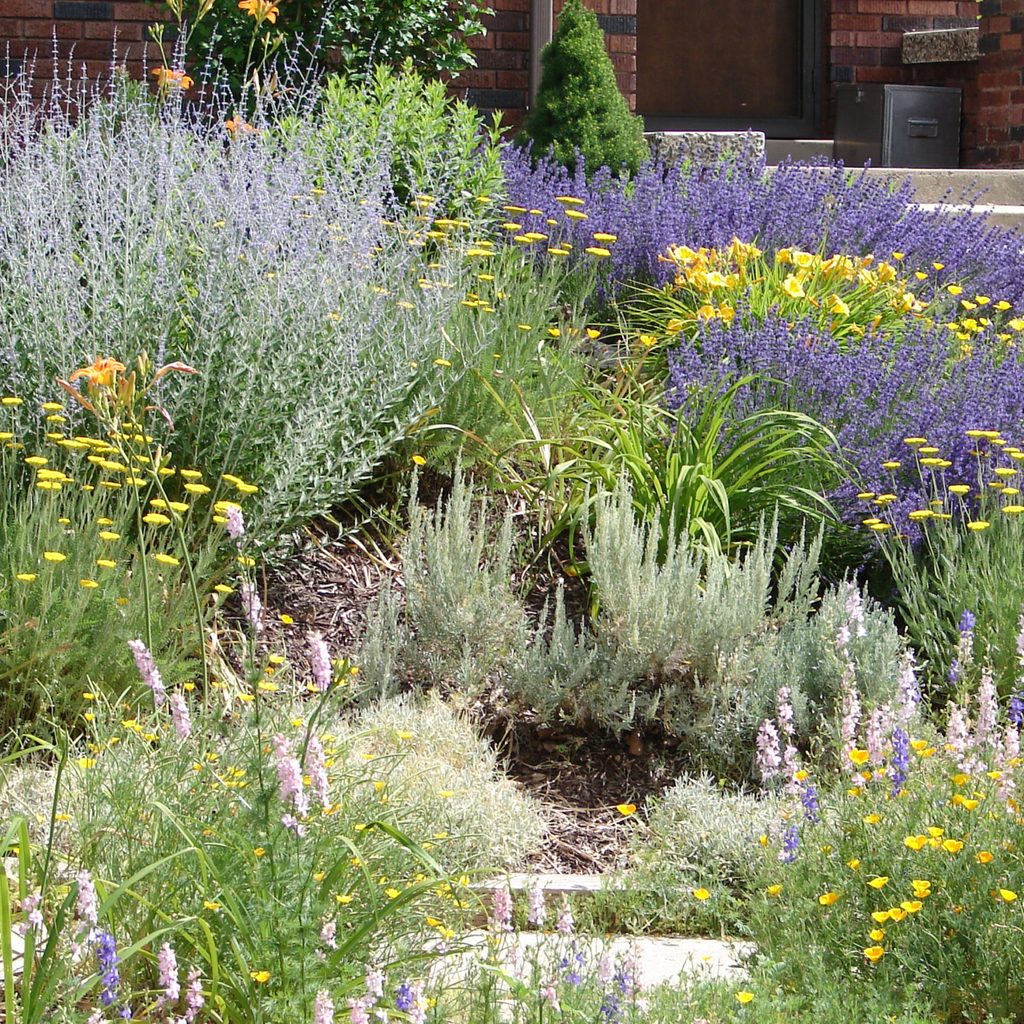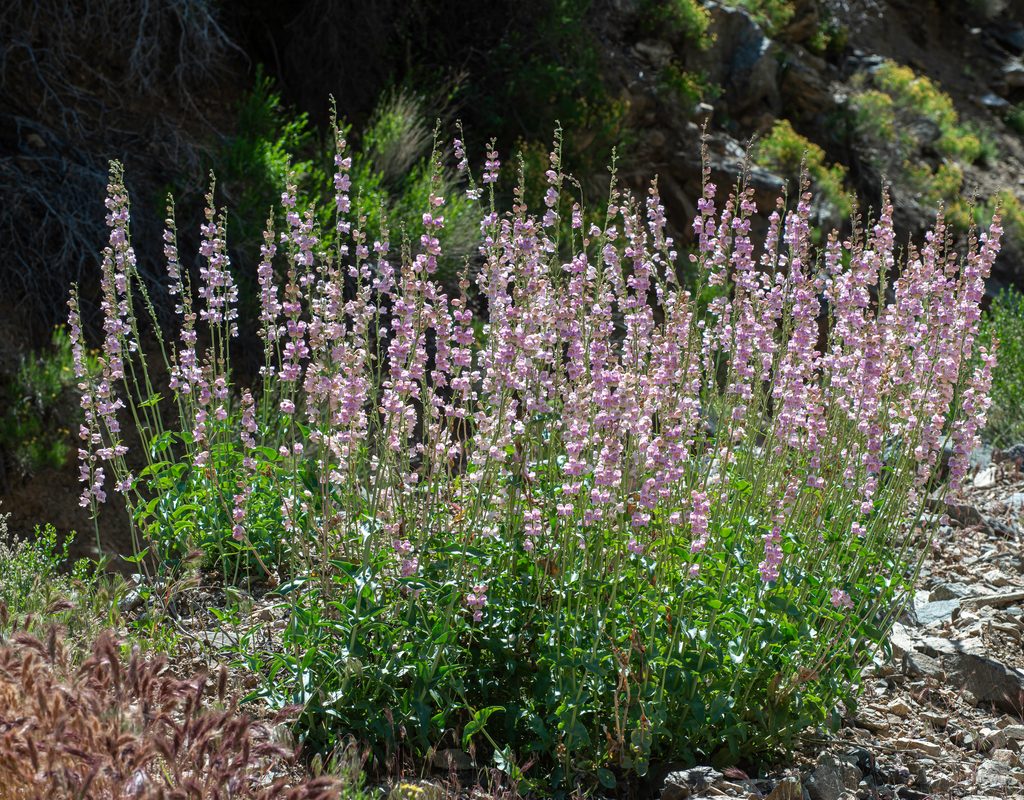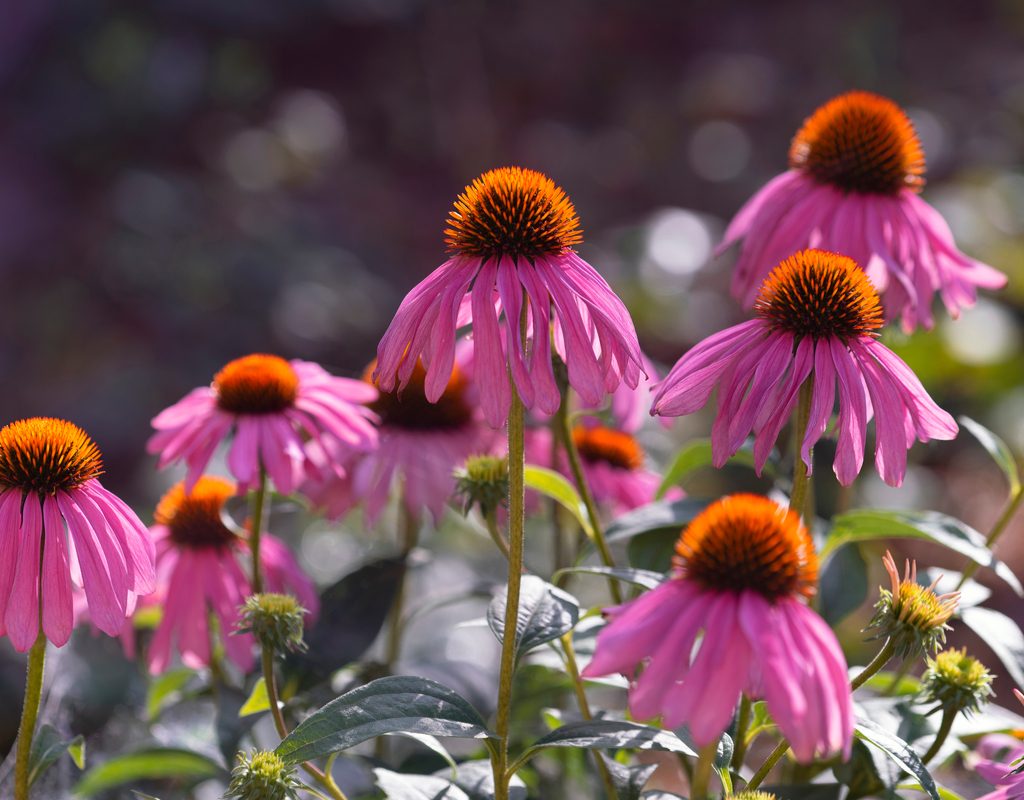
Low-maintenance landscaping starts with drought-tolerant plants. Not only do drought-hardy flowers help with water conservation, they also free up precious gardening time for other tasks. Plus they give you one less thing to worry about if you’re heading out of town for summer vacation. If you’re looking for an easier way to garden, these drought-tolerant flowers are a great place to begin.
What makes flowers drought tolerant?
A simple internet search for “drought-tolerant flowers” will generate plenty of leads, but they won’t all work in every garden. As with other plant categories, it’s important to choose flowers that will thrive in the unique climate and sunlight conditions in your garden. Before buying plants, learn your hardiness zone and whether your garden receives full sun, partial sun, or mostly shade. Then shop for annual and perennial flowers with these unique characteristics.
Origin
Plants that are native to your region are a great place to start. They’ve adapted over the years to withstand the temperature and moisture fluctuations that are unique to your climate. In addition to the climate, your garden’s sun exposure and soil conditions are important parts of the equation. Be sure to choose native plants for sun or shade as needed for your unique situation.
Plant combinations
Varied plant combinations can enhance drought hardiness. Combining taller and shorter plants throughout the garden helps both to be more resilient. Mixed plantings allow the individual plant types to utilize their forms and leaf structures in competitive and cooperative ways that result in a balanced garden habitat. Taller plants provide shade for shorter ones while lower plants shade the soil and protect taller plant stems from drying winds.
The same is true for plants with different root structures. Those with deep tap roots have access to moisture that shallow-rooted plants do not. But those with expansive lateral roots are the first to benefit from the smallest amount of new rainfall.
Physical adaptations
Even in diverse plantings of native species, certain flowers are simply more robust during drought conditions. This is directly related to their physical structure. Growth habit, leaf characteristics, root structure, and a variety of other details combine to give certain plants a leg up in dry conditions.
Short, stocky plants have less exposed surface area compared to taller, thinner ones. Similarly, thick leaves, especially when they have a waxy coating, offer less area for water loss through transpiration. Some drought-adapted plants incorporate tiny hairs along their stems or leaves that collect moisture from humid air. Others have succulent leaf and stem tissue that allows them to store excess water after rainfall and use it later.

Heat- and drought-tolerant flowers
Dry weather, excessive sunshine, and high temperatures spell disaster for most plants. But some tough individuals thrive under challenging conditions. If you have long hot summers and tons of sun, try some of these drought-tolerant flowers.
Annuals
- Cock’s Comb, Celosia argentea
- Cosmos, Cosmos bipinnatus
- Purslane, Portulaca oleracea
- Salvia, Salvia splendens
- Periwinkle, Catharanthus roseus
- Zinnia, Zinnia elegans
Perennials
- Anise Hyssop, Agastache foeniculum
- Blanket Flower, Gaillardia aristata
- Ice Plant, Delosperma cooperi
- Lantana, Lantana camera
- Autumn Sage, Salvia greggii
- Lambs Ears, Stachys byzantina
- Lavender, Lavandula spp.
- Sedum, Hylotelephium spectabile
- Russian Sage, Perovskia atriplicifolia
- Tickseed, Coreopsis spp.
Cold- and drought-hardy flowers
Cold climates are tough enough on gardens, even with plenty of rain. For those with sunny gardens in cooler climates, these drought-hardy flowers will work well.
Annuals
- Dianthus, Dianthus barbatus
- Pansy, Viola x wittrockiana
- Petunia, Petunia x atkinsiana
- Viola, Viola tricolor
Perennials
- Ornamental Onion, Allium giganteum
- Butterfly Weed, Asclepias tuberosa
- Catmint, Nepeta racemosa
- Coneflower, Echinacea purpurea
- False Indigo, Baptisia australis
- Golden Marguerite, Cota tinctoria
- Pinks, Dianthus gratianopolitanus
- Speedwell, Veronica persica
- Thrift, Armeria maritima
- Yarrow, Achillea millefolium
Flowers for dry shade
It’s hard to imagine a garden without sun or rain. Although plants can’t grow in total darkness and some water will be needed in the driest of times, there is hope. If your garden is in the shade, these drought-tolerant annuals and perennials could be great choices.
Annuals
- Fuchsia, Fuchsia spp.
- Lobelia, Lobelia erinus
- New Guinea Impatiens, Impatiens hawkeri
- Sweet Alyssum, Lobularia maritima
- Wishbone Flower, Torenia fournieri
- Wax Begonia, Begonia x semperflorens-cultorum
Perennials
- Bear’s Breeches, Acanthus mollis
- Big Root Geranium, Geranium macrorrhizum
- Bleeding Heart, Dicentra formosa
- Coral Bells, Heuchera spp.
- Plantain Lily, Hosta spp.
- Japanese Anemone, Anemone hupehensis
- Lenten Rose, Helleborus orientalis
- Lungwort, Pulmonaria officinalis
- Solomon’s Seal, Polygonatum biflorum



